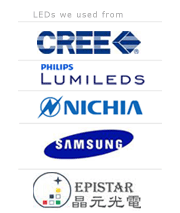News
Search
Popular search



Last Friday, LEDinside covered a Chinese article that pointed out Dow Corning filed lawsuits against Beijing KMT Technology Co. over LED organosilicone glue patent infringment. The patent at stake is actually LED optical silicone encapsulants. The LEDinside editorial team would like to apologize for the misleading terminology translation. For more details on the case, please see Dow Corning’s press release below:
Dow Corning, a global leader in silicones, silicon-based technology and innovation, filed a complaint through its Chinese subsidiary and licensee with the Shanghai First Intermediate Court. The complaint alleges that Beijing KMT Technology Co., Ltd (Beijing KMT) infringed Dow Corning’s Chinese patent by manufacturing and selling products using proprietary Dow Corning silicone technology under the Beijing KMT label.
The patent is part of Dow Corning’s diverse and multilayered intellectual property (IP) portfolio protecting its high refractive index (RI) phenyl-based optical silicone encapsulants, which offer numerous high-value benefits to LED devices. These benefits include improved light output, excellent mechanical protection of LED components and enduring gas barrier properties for enhanced reliability.
“As a global leader in the development of advanced high RI optical silicone technologies, Dow Corning will always rigorously defend its intellectual property to ensure that our customers continue to receive the highest quality products and reliability we can provide to help them stay competitive in today’s fast-growing LED market,” said Kaz Maruyama, global industry director, Lighting Solutions, Dow Corning.
For nearly 15 years, Dow Corning has invested aggressively to develop optical silicone technologies and products designed to advance applications along the entire LED value chain – in China and across the globe. Among these cutting-edge materials are Dow Corning’s phenyl-based high RI silicone encapsulants, which the company began innovating over a decade ago in Japan where the technology was first patented. Additional patents for these advanced optical materials quickly followed in Korea, the United States, European Union, Taiwan, Malaysia and other countries. Chinese Patent asserted in the complaint against Beijing KMT, was granted on April 2, 2008.
Today, leading LED manufacturers can purchase these high RI encapsulants worldwide under the Dow Corning? OE product label. Select silicones within this product family, such as Dow Corning? OE-6630, OE-7620 and OE-7651 Encapsulant, deliver RI in the range of 1.53 to 1.55, compared to 1.41 that is typical for methyl-based silicone chemistries. While seemingly small, that difference can translate into about 7 percent more light output. Achieving a comparable improvement from an LED chip would require a significant investment. In addition, the OE Series of high RI optical encapsulants has helped set industry standards for photothermal stability, color binning control, resistance to sulfur corrosion and high transparency.
Dow Corning’s dedicated investment and innovation extends beyond high RI silicones, to encompass a broad range of materials solutions that aim to enable next-generation LED devices, including transparent and thermally conductive die attach adhesives phosphor film binders and white reflective materials.
“Asia currently leads the market transition to LEDs for general lighting, driven especially by swift penetration in China,”* said Maruyama. “Supply chain integrity and consistent material quality are both key factors in ensuring that LEDs offer a credible, cost-effective alternative to conventional lighting. It takes only a few failed applications to raise doubts about the technology’s viability for future investment and adoption. Consequently, industry-wide defense and support of proven, patented and cutting-edge LED solutions such as Dow Corning’s OE Series helps validate the competitive value of LED lighting, and advances the interests of all.”
In addition to higher RI, Dow Corning’s broad portfolio of phenyl silicone packaging materials delivers photo and thermal stability suitable for many middle and high-power general lighting applications. Compared to methyl-based technology, phenyl-based silicone encapsulants generally offer a comparatively stronger gas barrier, which helps protect key LED components such as silver electrodes and phosphor against moisture deterioration and sulfur corrosion. LED electrodes double as reflective elements, and phosphor is a key element of light conversion. As a result, enhanced gas barrier protection helps maintain both the performance and reliability of LED output.
Over the past decade, the high efficiency and reliability afforded by Dow Corning’s phenyl silicones has helped establish the company as today’s recognized market and technology leader in optical encapsulants for high-performance LED applications. Virtually all of the company’s optical encapsulants fall under the recently upheld patent or its associated IP portfolio. Hence, LED manufacturers can be confident they are designing with high-performance encapsulant materials backed by strong international patent protection.
* Lighting the way: perspectives on the global lighting market, p. 27, McKinsey & Company



